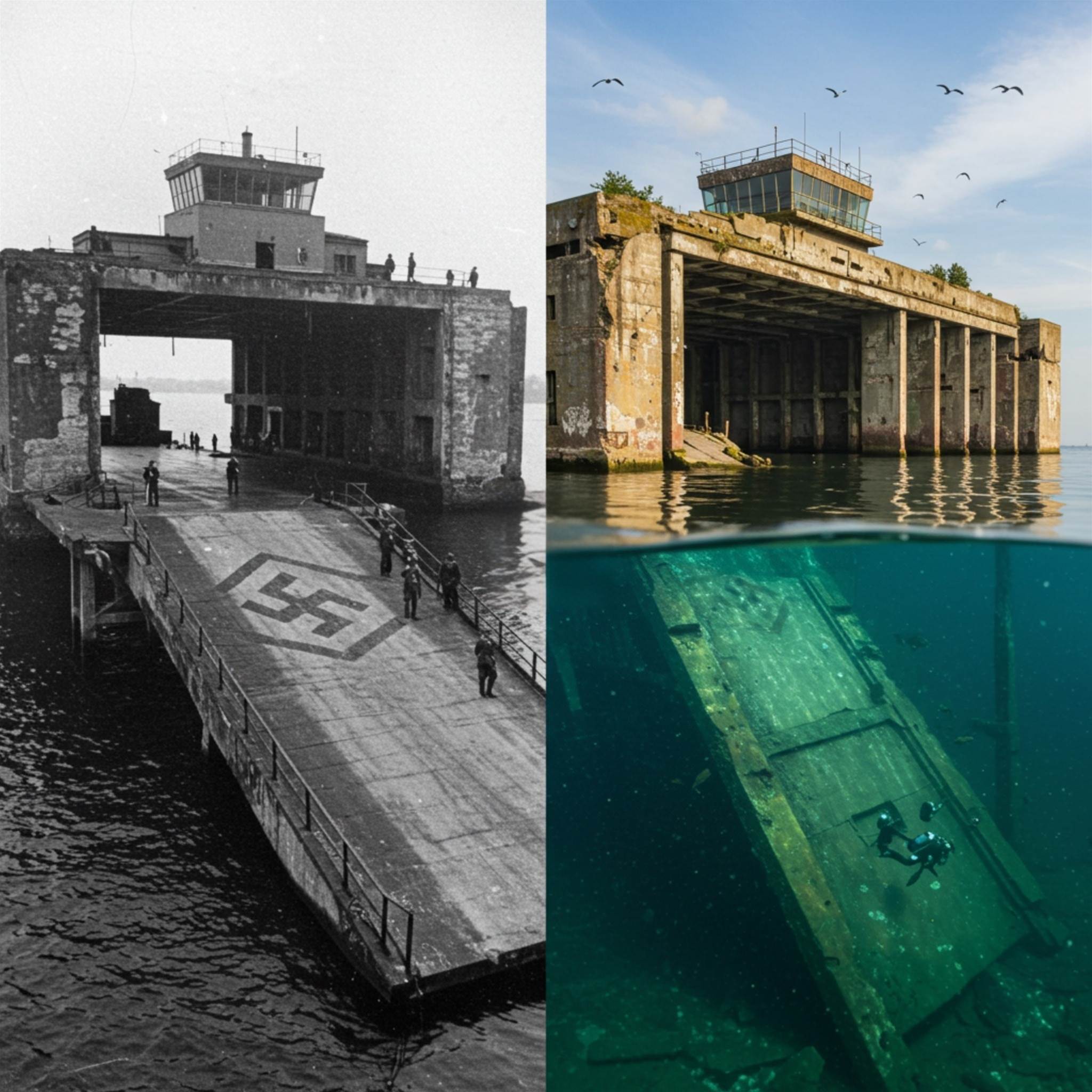
On the Baltic coast near Travemünde in Schleswig-Holstein, divers and historians are revisiting one of Europe’s strangest maritime ruins: the submerged Nazi seaplane hangar. Conceived during World War II as part of the regime’s naval aviation program, this massive concrete structure was designed to house giant seaplanes capable of crossing borders and projecting power across the continent.
But the war ended before the vision was realized, leaving behind an unfinished skeleton that the sea eventually claimed.
At low tide, vast ramps rise eerily above the water, resembling the remains of some lost empire. Beneath the surface, rows of perfectly aligned support beams form striking geometric patterns — a secret mostly visible to divers and aerial surveys.
These designs, once a feat of military engineering, are now canvases for algae, fish, and shifting sands. Remarkably, the old control tower still bears faint traces of a swastika mosaic, a chilling reminder of its original purpose.
The article is not finished. Click on the next page to continue.
The article is not finished. Click on the next page to continue.
Next page


















